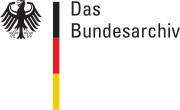 |
This is a file from the Wikimedia Commons. Information from its description page there is shown below.
Commons is a freely licensed media file repository. You can help.
|
Summary
| Title |
Eger, Besuch Adolf Hitlers  |
| Original caption |
For documentary purposes the German Federal Archive often retained the original image captions, which may be erroneous, biased, obsolete or politically extreme.  |
Sudetendeutschland: Eger empfängt den Führer. |
| Archive description |
| Description provided by the archive when the original description is incomplete or wrong. You can help by reporting errors and typos at Commons:Bundesarchiv/Error reports. |
Einmarsch der Wehrmacht in das Sudetenland |
| Depicted people |
- Hitler, Adolf: Reichskanzler, Deutschland
|
| Depicted place |
Eger |
| Date |
October 1938 |
| Photographer |
Unknown |
| Institution |
German Federal Archives   |
 |
| Native name |
Das Bundesarchiv |
| Location |
Koblenz (headquarters) |
| Coordinates |
50° 20′ 33.00″ N, 7° 34′ 21.00″ E |
| Established |
1952 |
| Website |
www.bundesarchiv.de |
| Authority control |
|
|
| Deutsches Ausland-Institut (Bild 137) |
| Accession number |
Bild 137-004055 |
| Source |
 |
This image was provided to Wikimedia Commons by the German Federal Archive (Deutsches Bundesarchiv) as part of a cooperation project. The German Federal Archive guarantees an authentic representation only using the originals (negative and/or positive), resp. the digitalization of the originals as provided by the Digital Image Archive. |
|
Licensing
File usage
The following pages on Schools Wikipedia link to this image (list may be incomplete):
This file contains additional information, probably added from the digital camera or scanner used to create or digitize it. If the file has been modified from its original state, some details may not fully reflect the modified file.
SOS Children's Villages chose the best bits of Wikipedia to help you learn. SOS Children's Villages believes education is an important part of a child's life. That's why we ensure they receive nursery care as well as high-quality primary and secondary education. When they leave school, we support the children in our care as they progress to vocational training or higher education. Sponsoring a child is a great way to help children who need your support.





